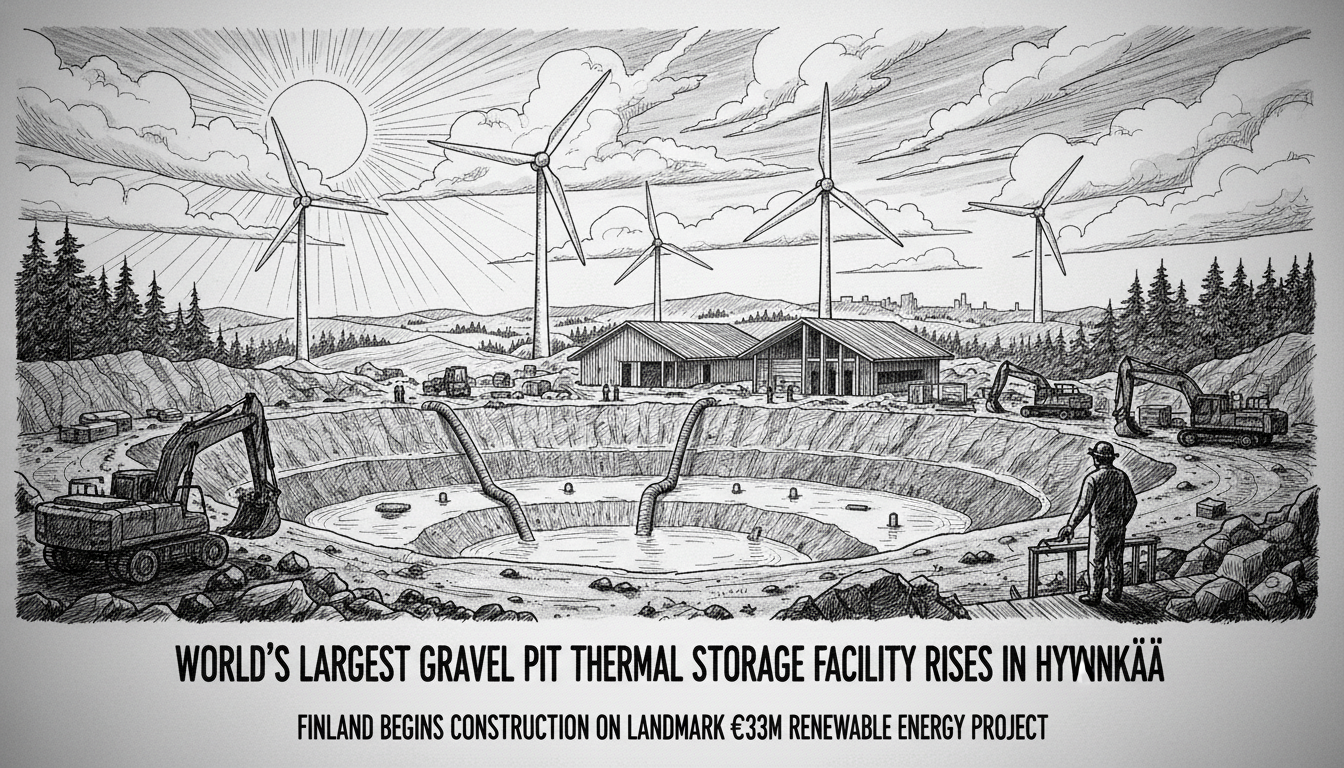Construction has begun on what will become the world's largest seasonal thermal energy storage facility built inside a gravel pit in Hyvinkää, Finland. The massive project represents a major step in renewable energy infrastructure for the Nordic region.
Workers have already cleared forest and fenced the area at Kulomäki in preparation for the €33 million facility. The project received €7.7 million in investment support from Finland's Ministry of Economic Affairs and Employment. L&T Teollisuuspalvelut Oy serves as the main contractor for the first phase.
This marks Finland's first thermal storage facility of this scale and type. Preparation and permitting took over three and a half years to complete. Construction will continue for approximately two years, with the facility scheduled to become operational in the third quarter of 2027.
The seasonal storage system works by filling with tap water that stores thermal energy. This stored heat can then be released into the district heating network during winter months when energy demand and prices typically peak.
City Mayor Johanna Luukkonen emphasized the project's broader significance. "This significantly increases the share of renewable heat in Hyvinkää and takes our carbon neutrality goals a great leap forward," she stated during the construction launch ceremony.
The water mass will save nearly one-quarter of Hyvinkää's annual energy needs. At current energy prices, this translates to annual savings of several million euros in heat procurement for the city. The facility will also reduce carbon dioxide emissions by 4,400 tons annually.
Beyond cost savings, the thermal storage will participate in electricity market flexibility alongside electric boilers. "It ensures reasonably priced heat for Hyvinkää residents and businesses going forward," project officials noted.
The timing of energy storage represents a crucial advantage. By charging the facility during summer and autumn when energy costs are lower, the city can provide more stable pricing during high-demand winter periods.
Esa Vakkilainen, Emeritus Professor of Energy Systems at LUT University, described the project as indicative of broader energy market transformation. "Finland is currently experiencing an energy storage boom," he observed. "Water storage currently represents the most technically and economically sensible solution for large-scale applications."
Professor Vakkilainen noted that while sand storage technologies show promise, they remain relatively young and small in scale. Water-based systems offer proven reliability. The facility could also potentially store waste heat from data centers in the future.
The project provides competitive advantages for local businesses seeking to operate responsibly. Companies increasingly prefer locating in areas where waste heat can be utilized effectively. Construction work also brings jobs and investments to local enterprises.
This development strengthens Hyvinkää's energy self-sufficiency and ensures greater security for the district heating system. The ability to store heat when prices are favorable guarantees more stable delivery and pricing for residents.
The Hyvinkää project demonstrates how Nordic municipalities are leading in practical renewable energy solutions. Rather than waiting for national initiatives, local governments are implementing substantial infrastructure projects that address both economic and environmental concerns.
Thermal storage technology represents an increasingly important component of Northern Europe's energy transition. As countries work to decarbonize heating systems while maintaining affordability, solutions like the Hyvinkää facility offer a replicable model for other municipalities facing similar challenges.

